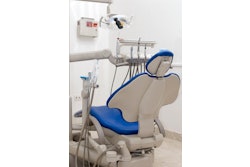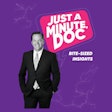In the era of data-driven decision-making, large dental support organizations (DSOs) seem to have every advantage: analytics platforms that predict patient trends, streamlined operations, and marketing budgets that dwarf those of small practices. For solo or small-group practices, competing against these giants might feel like an uphill battle. How can a single-location office match the scale and resources of a corporate dental organization?
 Dr. Lior Tamir.
Dr. Lior Tamir.
Here's the good news: You don't need to match their size to compete -- you need smarter tools. Most small practices already have access to the data they need to thrive.
Patient histories, appointment schedules, treatment plans, and even reviews are all data points waiting to be leveraged. The right analytics tools can transform these everyday metrics into actionable insights that fuel growth, optimize efficiency, and build patient loyalty.
In this article, I will explain how you can harness the power of data and show that small practices can not only compete with DSOs, they can outmaneuver them.
Start with the basics: Operational metrics
Operational efficiency is the cornerstone of any successful dental practice. It ensures your time, staff, and resources are optimized, allowing your practice to run smoothly and profitably. However, inefficiencies often lurk unnoticed, quietly eroding margins. By tracking and analyzing operational metrics, small practices can uncover opportunities for improvement.
Schedule utilization
One of the most important metrics to monitor is your schedule utilization. It's not just about filling chairs but doing so strategically. Are certain times of the day consistently underbooked? Are last-minute cancellations leaving costly gaps? By tracking appointment trends, you can pinpoint patterns that need attention.
For example, if afternoons are slower, you might introduce promotions for cosmetic treatments during those hours. Additionally, using data-driven appointment reminders can reduce no-shows by as much as 30% -- a real-world improvement seen by practices using automated systems.
Treatment acceptance rates
Treatment acceptance rates reveal how effectively your team communicates the value of care plans. If patients frequently decline recommended treatments, it could indicate that financial concerns or unclear explanations are holding them back.
Analyzing these metrics can help identify bottlenecks in your approach. Are patients overwhelmed by too many options? Do they understand the long-term benefits of care? Using visuals, analogies, and clear payment plans -- strategies supported by platforms like The Dental App (TDA) -- may boost acceptance rates significantly. For example, one practice using TDA reported a 10% increase in acceptance rates, adding $40,000 in monthly revenue.
Claims processing
Slow claims processing can lead to cash flow issues that stress both your staff and your bottom line. By analyzing the average time it takes to resolve claims, you can identify where delays occur.
Practices that adopt automated claims-tracking tools often reduce resolution times by up to 30%. This improvement not only speeds up reimbursements but also reduces administrative headaches, letting your team focus on patient care.
Leverage patient data for retention and growth
DSOs excel at using data to understand and anticipate patient needs, but small practices can adopt similar strategies. By focusing on retention and personalized care, you can turn your patient base into your greatest asset.
Patient retention
Retention isn't just about keeping patients -- it's about securing long-term revenue. Data can help identify at-risk patients, such as those overdue for cleanings or follow-ups.
Automated reminders and targeted offers can re-engage these patients, showing them that their care is your priority. For instance, one practice reactivated 15% of dormant patients within six months by sending personalized reminders tied to patient history. These small, data-driven touches can make a significant impact on loyalty and lifetime value.
Feedback analysis
Reviews and surveys aren't just feedback, they're actionable data. If multiple patients mention long wait times, for example, you can address scheduling inefficiencies.
Similarly, if patients rave about a specific staff member or service, you can highlight those strengths in your marketing. One practice saw a 10% increase in five-star reviews within six months simply by automating follow-up requests after appointments. These reviews not only build trust but drive new patient inquiries.
Smarter marketing through data
Marketing is often seen as a challenge for small practices, but data allow you to do more with less. Instead of casting a wide net, you can target specific groups with personalized campaigns that are both effective and affordable.
Targeted campaigns
Segment your audience based on demographics or behavior. Promote veneers or whitening to younger adults seeking aesthetic treatments while marketing implants to older patients looking for restorative care. This type of targeted outreach ensures your efforts resonate with the right audience.
Track return on investment
Data let you measure the return on investment for every marketing channel. For example, track how many new patient inquiries result from a specific email campaign or social media ad.
Online reputation management
Your online reputation is one of your most powerful marketing tools. Analyzing review trends helps you understand patient sentiment and highlight your strengths. Use a system to automate review requests, keeping your reputation fresh and visible.
The comments and observations expressed herein do not necessarily reflect the opinions of DrBicuspid.com, nor should they be construed as an endorsement or admonishment of any particular idea, vendor, or organization.
Dr. Lior Tamir is a practicing dentist, entrepreneur, and digital strategist. Dr. Tamir has founded and led multiple startups that have leveraged data, AI, and design thinking.



















